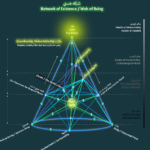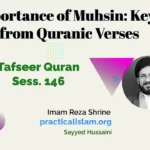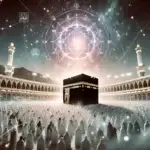Heavy Costs for the Shrines of the Imams, Why? Are They Satisfied with?
The best answer to this question is that these shrines belong to the Ahl al-Bayt and the Ahl al-Bayt themselves have special care and attention to their shrine. If these constructions, beautifications and expansion of the shrines were not to the satisfaction of the owners of the shrines, they would definitely have to control it in some way, for example, in a dream, they would announce it to one of the scholars or managers of the holy shrines. Or even the Imam of the Time, who always comes to visit his holy ancestors, if He was dissatisfied with these expenses, He should have told someone at least once, as they have done in many important matters. Therefore, not expressing dissatisfaction from any of the Imams to any of the scholars or the officials of the shrines, neither in waking nor in dreams, can be the strongest reason for the Ahl al-Bayt NOT to be dissatisfied with these expenses in their shrines.
But analytical answers:
- The principle of decoration and beautification is not condemned in Islam, but it is praised as Allah is beautiful and loves beauty. Especially at this time when everyone is a person of decoration and beautification of their appearance and their houses. Just as Imam Ali wore rough clothes, his son Imam Sadeq (as) wore luxurious and beautiful clothes. Someone criticized him and he replied that my grandfather’s time was different from ours. So the situation differs from time to time, from place to place and from person to person. If today the clerics and followers of the school of Imam Sadeq (AS) follow the example of Imam Ali (AS) and do not wear neatly and beautiful clothes, will people tend to them? This is while all human beings and even Muslims and believers are adorned with their clothes and their houses today. Now, if our houses are decorated but our mosques are not, do our teenagers, young people and even our elders tend to go to mosques?
- If our holy places are not adorned, do not others (non-Muslims) ask themselves how mosques and shrines are so valuable to them, but they are not willing to spend for them and adorn them?
Therefore, the decoration of valuable assets such as the shrine of the Imams, which is one of our valuable assets, shows our importance to their graves.
On the other hand, the apparent and physically beautifying inconsideration for the graves of the Ahl al-Bayt shows its low value to us.
- Now, if the poverty of the people is due to the expenses done to the sanctuaries of the Ahl al-Bayt, it is certainly reprehensible, but in fact it is not, but the main cause of poverty is the mismanagement of financial resources in the world and in Islamic countries. Whether we pay for the shrines of Ahl al-Bayt or not.
Depriving Harams to pay for adornments due to the poverty existence in the society is like depriving pilgrimage to Haj and Karbala because of the existence of the poor and needy. Certainly one cannot be sacrificed for the sake of the other. Feed the needy instead of going to Hajj and Karbala is not a rational and religious solution. Only and only if there is no other assets or resources to be paid for the poor other than paying from your Hajj or Karbala expenses, yes, in such a conflicting moment we shall stop spending for Hajj and spend for the poor because there is no other resources to be spent from.
- The cost of building the shrines is covered by the people’s vows and endowments, and no one can force the people to spend their money, land or property elsewhere.
- A shrine like the holy shrine of Imam Reza (as) has about 20 million pilgrims a year, and other shrines such as the holy shrines are the same in total. Therefore, these holy places, in addition to having the necessary beauty and charm, must also have sufficient facilities to receive this large number of people.
- Contrary to what is seen or counter-advertised, the cost of beautification and decoration is not high, but the cost of infrastructure and construction is high.
As for the last word:
The ideal Masjid or Haram is the simplest one physically and the most complex one spiritually. That is to say we shall not make our sanctuaries too showy, as the main usage of these places is the spirituality of them. But this never means that we shall not spend any sort of adornment for them because they are meant to be for the purpose of spirituality. Talking this or that, either zero or 100 is too absurd and irrational. The best way is the way in between. Islam is a moderate religion i.e. pay for both aspects of your life i.e. physicality and spirituality but pay each one his due; your spirit is eternal and your destiny then pay for that more, your physical is also one part of your existence, also pay for that as much as needed (this NEED, of course, differs sometimes as explained previously. That’s why we always need jurisprudents and Fuqaha (jurisprudents) to decide on such issues and events as Imam Zaman a.s has said:
فاما الحوادث الواقعه فارجعوا الی رواه احادیثنا… (As for the incidents, refer to the narrators of our hadiths…);
And today we see that neither Fuqaha nor Imams object such expenses for the Holy Shrines of the Imams.
At the same time, we accept that there are some additional costs in some shrines that need to be corrected.








